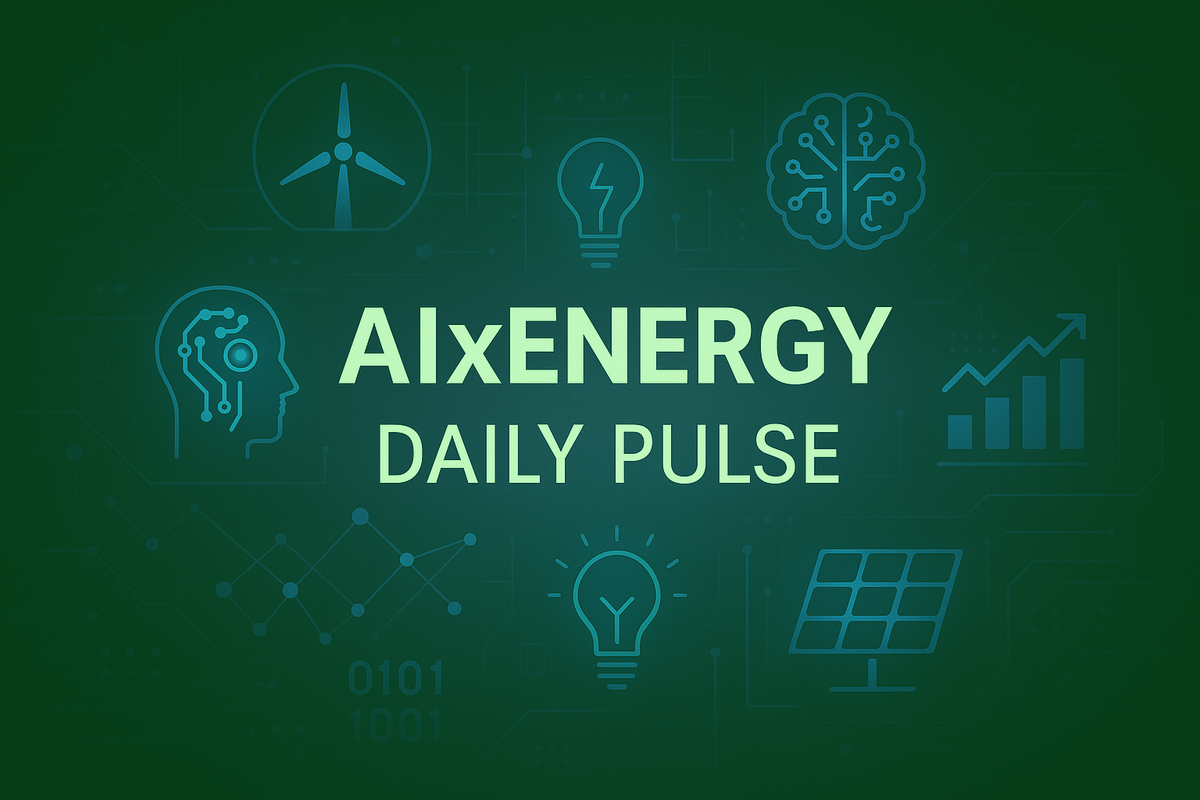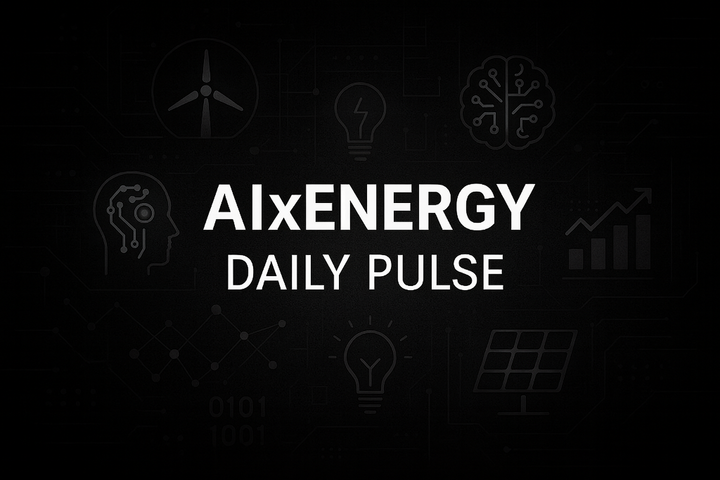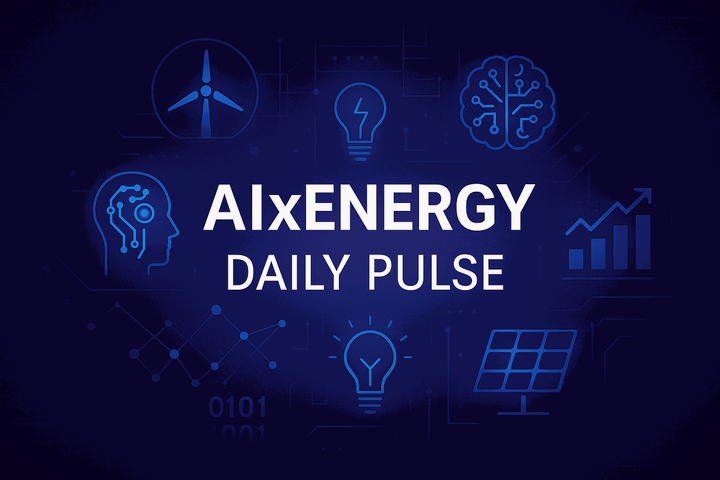07.31.25
Cyberdefense, Edge Robotics, and Embedded Cognition Mark Today’s AI-Energy Shift

A wave of new publications and market activity today highlights the accelerating convergence of artificial intelligence and energy infrastructure. From automated cyberattack detection to field-deployed robotics and multi-agent coordination, these 21 signals suggest that AI is no longer operating at the periphery of the grid—it is being structurally embedded across control, sensing, analysis, and decision-making layers.
The Grid Learns to Defend Itself
One new framework uses large language models (LLMs) to detect and explain cyberattacks within Automatic Generation Control systems, which regulate frequency and balance on bulk power systems (arXiv). A second study models how distribution systems can reconfigure themselves under cyberattack by deploying DERs and intelligent reclosers dynamically (arXiv).
Meanwhile, in the regulatory arena, five utility commissions filed a formal complaint with FERC opposing a $22 billion multistate transmission buildout proposed by MISO (Utility Dive). As cyber risks grow and infrastructure modernization stalls, a clear tension is emerging: the technical capability to defend exists, but the political will to invest remains fragmented.
Robotics and Intelligence Move to the Edge
Across industrial settings, AI is increasingly being embedded in field operations. Nextracker, a leading solar tracker company, announced the launch of its new robotics division following the acquisition of OnSight Technology (Solar Power World). The integration of fire detection and automated inspection points to a broader trend: solar infrastructure is becoming intelligent by default.
In parallel, researchers introduced NeurIT, a neural tracking model designed for precise indoor navigation in environments where GPS is unavailable—such as substations, data centers, and industrial facilities (arXiv).
Completing this edge-focused cluster, the SmallThinker project revealed a family of LLMs that can operate entirely on local hardware. These models are compact, efficient, and optimized for private, on-device reasoning (arXiv). Together, these developments suggest a pivot toward embedded AI—autonomous, localized, and decoupled from the cloud.
Constraining AI Inside the Machine
As AI tools take on more control-layer responsibilities, new research is emerging to ensure their decisions remain safe and explainable. A reinforcement learning model introduced input convex action correction—a mechanism to ensure that agents’ actions remain within provable safety boundaries during deployment (arXiv). In another study, LLMs were shown to generate novel heuristics inside SAT solvers, revealing their ability to assist in formal reasoning and optimization (arXiv).
Most significantly, researchers proposed a new trust-native protocol that ensures distributed AI agents are verifiable, auditable, and cooperative by design (arXiv). These developments highlight the movement toward operational AI systems that are not only capable, but governable.
AI Accelerates Climate, Chemistry, and Computation
A Greenland-focused study combined physics-based modeling with generative AI to improve the spatial resolution of surface mass balance and temperature projections (arXiv). Elsewhere, a specialized LLM called ChemDFM-R was trained to reason across atomic and molecular data, offering predictive insights for chemical synthesis and fuel design (arXiv).
Meanwhile, a new tool that extracts core algorithms from academic papers and automatically translates them into executable code could dramatically speed up the path from theory to prototype (arXiv).
Together, these developments point to AI’s growing role in accelerating clean energy innovation—not only through automation, but by augmenting scientific discovery itself.
AI Begins to Regulate Itself
Three papers examine how language models can validate, critique, and constrain their own outputs. The first proposed using semantic entropy as a metric for test-case validation in LM-generated code (arXiv). Another demonstrated that LLMs can be trained as qualitative judges, rating their own fluency and coherence during generation (arXiv).
Finally, a study on differentially private LLM fine-tuning showed how reinforcement learning techniques can optimize models under strict data privacy constraints (arXiv). These papers reflect a growing emphasis on introspective, compliant, and ethically bounded AI—especially important for infrastructure applications subject to regulatory oversight.
Building the Cognitive Foundations
Several foundational advances also emerged across vision, graph theory, and multi-agent systems. A new review of object recognition datasets outlined key gaps in realism, edge conditions, and robustness (arXiv), while a hybrid HOG-CNN model improved classification performance in constrained environments (arXiv).
A comprehensive survey of hyperbolic graph learning techniques emphasized their relevance for modeling hierarchical structures like grid topologies and knowledge graphs (arXiv).
In operational coordination, a deep attention model for multi-agent routing demonstrated improved outcomes in collaborative planning scenarios (arXiv)—a technique potentially valuable for fleet logistics, autonomous repair teams, or distributed grid resources.
Finally, researchers applied LLMs to the task of modeling narrative expectation—a signal of future use cases in persuasive energy communications, education, and user-interface design (arXiv).
Together, today’s signals form a coherent picture of an energy sector entering a phase of structural AI integration. What was once exploratory—LLMs in research labs, robotics in pilot tests, edge models in theory—is rapidly becoming operational. AI is now detecting cyber threats at the control layer, inspecting infrastructure autonomously, navigating industrial environments without GPS, and even regulating its own logic under strict privacy constraints. It is optimizing climate models, accelerating chemical discovery, and translating science into software. From system protection to scientific invention, AI is no longer a supporting actor—it is being woven into the grid’s cognitive foundation. The architecture of energy is becoming algorithmic, governed not only by physics and policy, but increasingly by models that learn, adapt, and self-regulate in real time.

